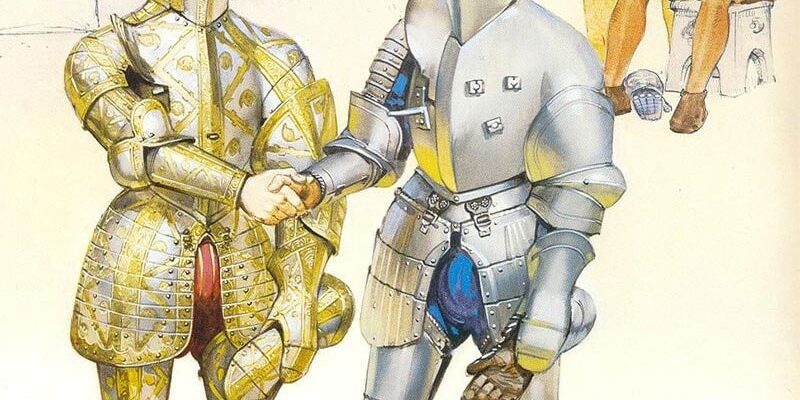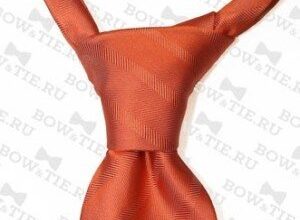The time has come for the third article, and, this time, it will focus on a previously raised topic – the rules for shaking hands in men. In the first issue, we already talked about the existence of three different types of handshakes and their interpretation, but today we will dwell on this issue in more detail. Let's get started!
If you are sociable enough or because of the specifics of your work meet a large number of people during the day, then you probably have to often shake hands when answering greetings. Perhaps, in the circle of friends, the handshake becomes more 'meaningful', especially if you are really happy to meet with this or that person, but, most often, this ritual is perceived as a common formality required to be performed. Behind all this veil of routine, consisting of a huge number of conventions, it is very difficult not only to analyze the greetings of other people, but also just to understand why, in fact, this utterly familiar ritual is performed. What exactly is a handshake? When is it appropriate to shake hands and when not? How to determine by a handshake what kind of person is in front of you? Today we will try to understand each of these issues.
Handshake history
Few people know, but the handshake is a rather ancient gesture. We will not delve into history, but, for example, this ritual is attested in a bas-relief depicting how the Babylonian king Marduk-zakir-shumi I shakes hands with the king of the Assyrians, Salmananasar III. This episode took place in 855 BC. An impressive figure, isn't it? There is also a version, probably the most romantic and beautiful, that this gesture found its popularity during the Middle Ages at knightly tournaments. Despite the large number of hypotheses, the meaning of the handshake at all times remained the same – to show the absence of a weapon in the right hand and, as a result, to demonstrate good intentions. Agree, it is more pleasant to shake hands with your boss or a friend, presenting yourself as a noble knight, than to do it without any thought.
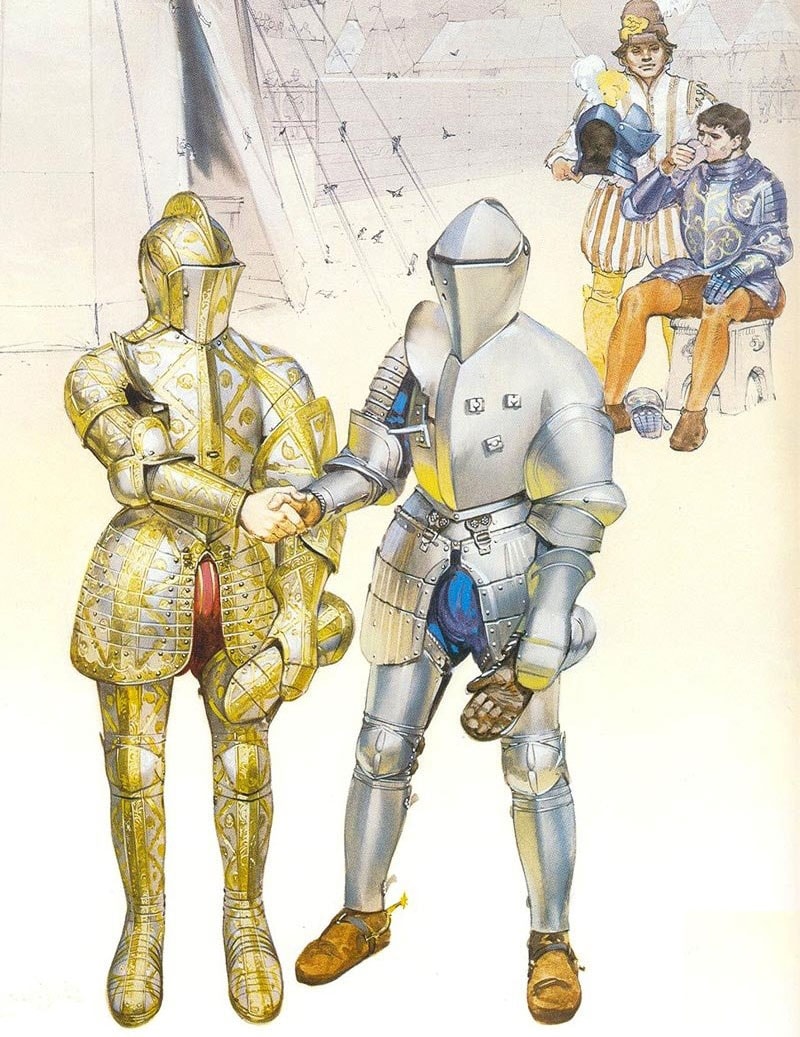 Watch your palms, they can tell a lot
Watch your palms, they can tell a lot
Examples:
- When children lie, they hide their palms behind their backs.
- If the wife wants to hide where she was all night, during the explanation she will hide her palms in her pockets or keep them crossed.
This begs a natural question. If I lie but keep my palms in plain sight – will they believe me? An unambiguous answer cannot be given. There are many other gestures that accompany a lie. If they are noticeable, they will allow you to doubt your sincerity. On the contrary, if there are no noticeable ones, then, most likely, other gestures symbolizing your sincerity will also not be noticeable. We will not delve into this topic, since the purpose of this article is to interpret gestures, and not teach others to lie. Instead, here's some pretty helpful advice. To increase the confidence of other people, make it a habit to keep your palms open while talking. This will encourage your interlocutors to be more open and trusting with you. In addition, it will reduce the amount of falsehood in your speech and in the speech of interlocutors, since most people cannot lie when their palms are open.
One of the most significant and subtle non-verbal signals is the signal transmitted by a person's palm. When used correctly, it gives people a greater level of authority and, in some cases, gives them the ability to command others.
There are three types of command gestures. Let's analyze them using a specific example. For example, ask a coworker to pick up a box from the floor and place it on top of a cabinet, using the same words, tone of voice, and facial expressions. Only the position of the palm will change.
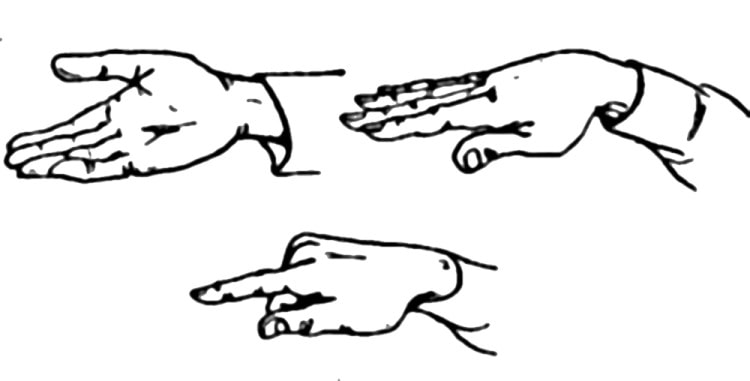 Palm position
Palm position
- Open palm up. Doesn't carry any threatening context. Seeing such a gesture, the person will not feel any pressure on your part and will take it all as an ordinary request.
- Open palm down position. This gesture carries a tinge of authority. With some probability, it can cause hostility, since a person can perceive this situation as an order. If your colleague is on an equal footing with you, the request may not be fulfilled.
- 'Pointing Finger'. Associated with compulsion to obey. This is one of the most annoying gestures in dialogue. If you are actively using this gesture, then try to replace it with the two previous gestures. This will help you achieve great success in communicating with others.
Sign language. Handshake
In one of the previous articles, we have already considered the types of handshake. Depending on the position of the palms, it can denote superiority, humility and equality. Here's an example to refresh your memories.
You first meet a certain person, and you greet each other with the usual handshake. Depending on the position of your recipient's palm, it can mean the following:
- Palm pointing down – 'This guy is trying to put pressure on me, you should be careful.'
- The palm is pointing up – 'Perhaps I can put pressure on this person, it is worth considering this fact.'
- Palms parallel to each other – 'This guy definitely makes me sympathetic. We'll get along. '
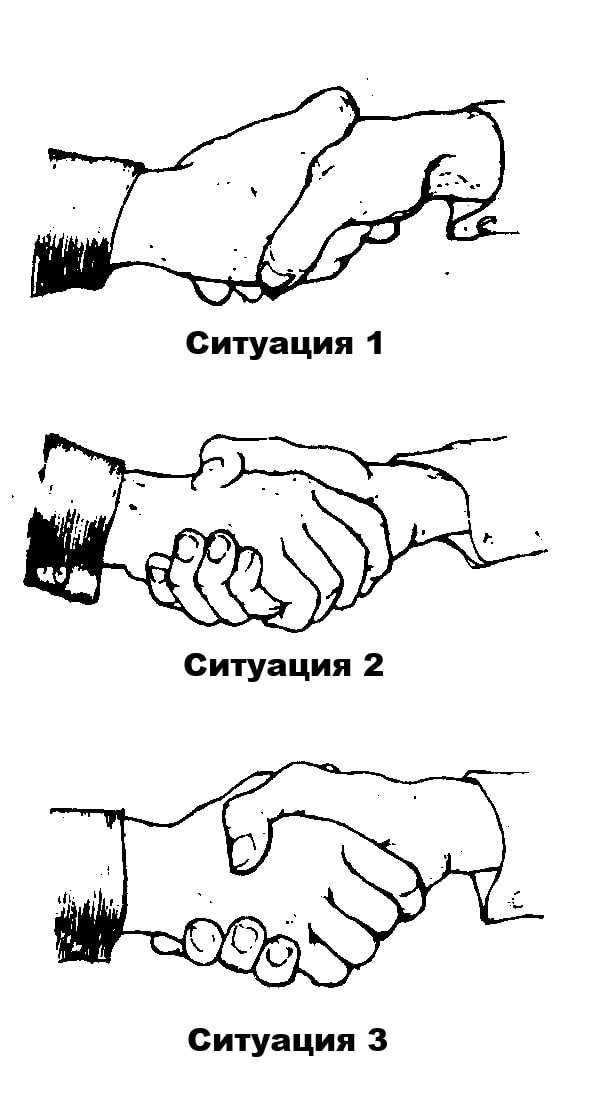 Types of handshakes
Types of handshakes
This information is transmitted unconsciously, after a series of trainings, you can accustom yourself to use this or that handshake to provide the desired effect on others.
It is worth noting that there are exceptions to the rule. For example, people with arthritis are forced to respond with a weak handshake. A sluggish handshake is also typical for a number of professions, for example, surgeons and musicians.
To determine exactly what kind of person is in front of you, observe his subsequent actions. A compliant person, in the future, will demonstrate other gestures that characterize him as a submissive recipient, and an overbearing person will show his aggressiveness. In the event that two powerful people greet, a symbolic struggle takes place between them, during which everyone tries to subdue the opponent's hand. Often this struggle leads to an equal handshake in which both hands remain upright and both people develop a sense of mutual respect. This is the kind of handshake that the father teaches his son when he asks him to say hello, 'like a man.'
In the event that you greet an overbearing person, it is very difficult to persuade him to an equal handshake, and even more difficult to do it in the least noticeable way. Before we have already considered one of the ways to return the initiative into our own hands, but now the time has come to introduce a different method of disarming such people. It will allow not only to take control of the situation, but also to puzzle the recipient by invading the personal zone.
To learn this technique, you need to train the following movements:
- First movement. When you take the hand of an overbearing person, step forward with your left foot. I recommend that you always lean forward for a handshake with your left foot, even if you do not use the described technique. This will give you room to maneuver and allow you to neutralize the dominant handshake if necessary.
- Second movement. Move your right leg forward and stand in front of the recipient on the left, moving into his personal area.
- Third movement. Place your left foot behind your right and shake your partner's hand.
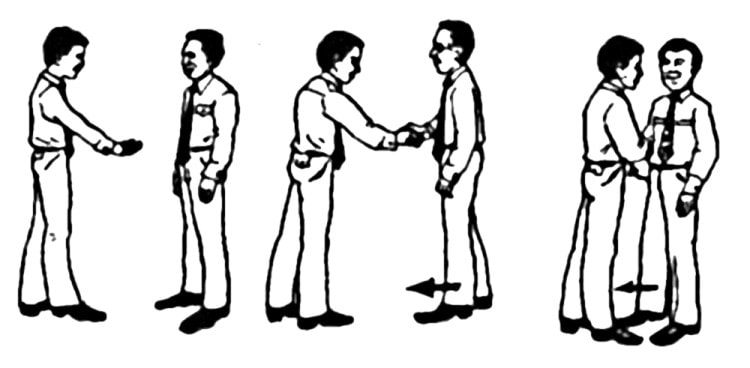 Handshake behavior
Handshake behavior
This technique allows you to bring your opponent's palm to a different position, as well as to become the master of the situation, since you have violated your partner's intimate zone.
Other types of handshakes
- The 'glove' is mainly used by politicians. The initiator of such a handshake tries to emphasize his honesty, but you should not use this gesture in everyday life, as it can have the opposite effect. (picture of a glove).
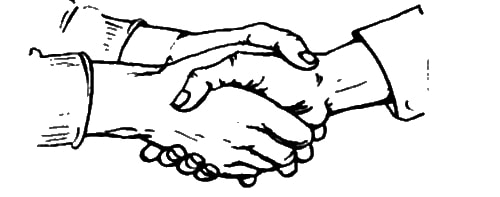
Glove
- 'Dead fish'. Some handshakes can be so unemotional and 'lifeless' that they give the impression of touching a dead fish. Naturally, touching a fish corpse does not cause any positive emotions, so people with this kind of handshake are perceived as spineless and unpleasant. It's funny that such people do not realize that this type of handshake is peculiar to them, so it is worth asking your friends about this topic.
- A handshake with a crunch of bones. Inherent in aggressive and tough people.
- Shaking with a straight hand. Like the previous option, it is a sign of a person's aggressiveness. The main purpose of such a handshake is to try to maintain a distance and not allow a person to enter his intimate zone.
- Shaking your fingertips. Instead of a hand, by mistake, the handshake involves only fingers. Even if the initiator of such a handshake is friendly towards you, this symbolizes his self-doubt and desire to keep his distance.
- A handshake with the hand drawn towards you. It can mean one of two things. Either a person is extremely insecure and feels comfortable only within his own personal zone, or he belongs to a nation that is characterized by a narrower intimate zone.
- Shaking with both hands at once. Expresses trust and sincerity. To convey the overflow of feelings, the left hand is used, placed on the partner's right hand. The higher the place to the shoulder where the initiator puts his left hand, the greater the feelings he experiences. The reverse side of the coin – violation of the personal zone. This handshake is possible only between people who are close enough, or between people who are simultaneously experiencing emotional uplift during the shaking. If this feeling is not mutual, then there is a likelihood of distrust.
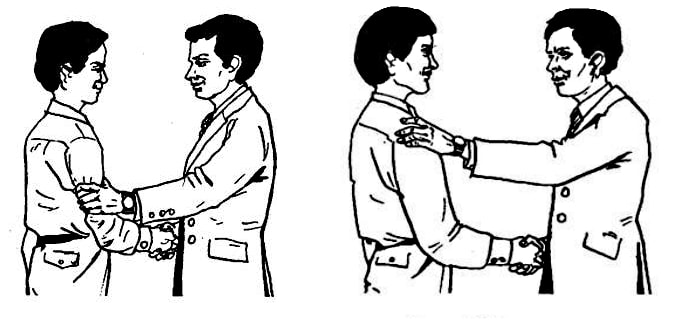
Shaking with both hands at once
Finally
Well, in this article, we briefly, but as informatively as possible, figured out the types of handshake, and also figured out several elementary rules of etiquette. As we found out, a handshake can make it clear what kind of person is in front of us, and, as they say, who owns the information, controls the situation.
Save your time and all the best to you!

